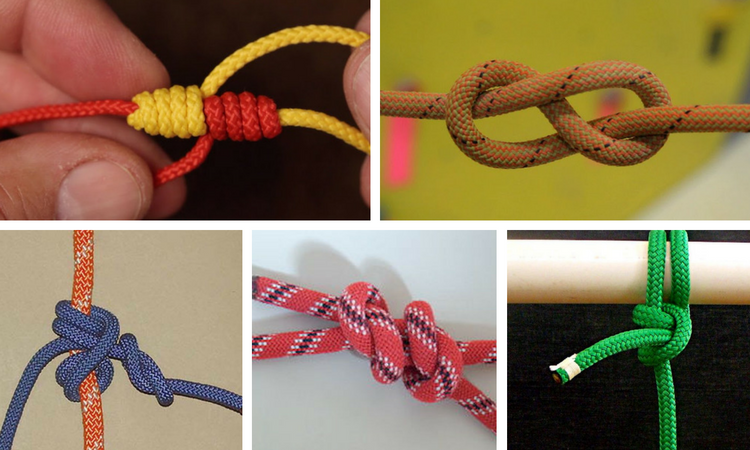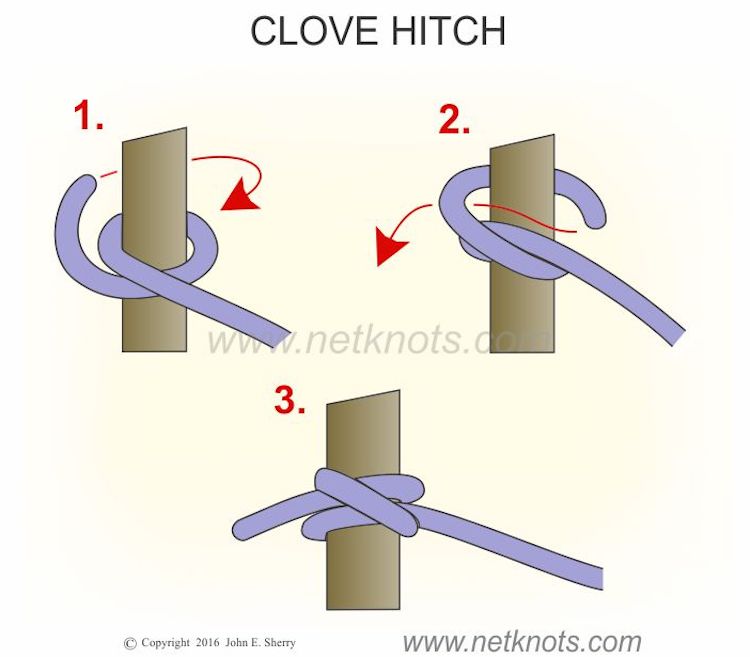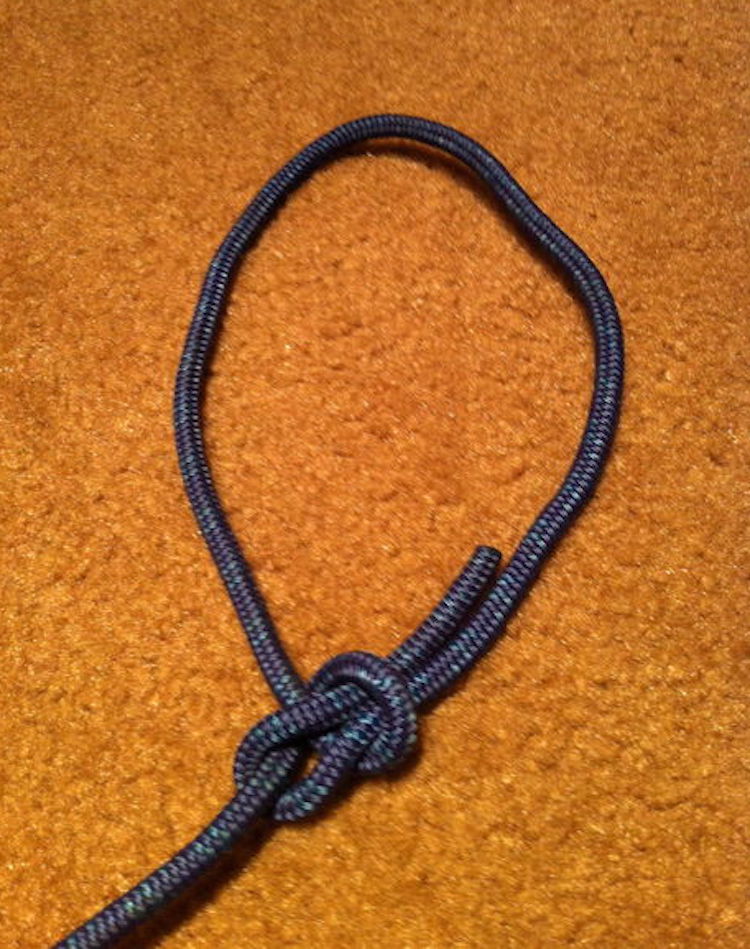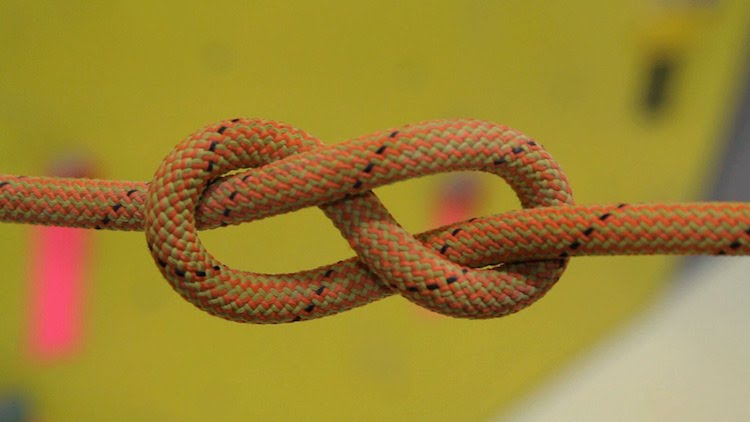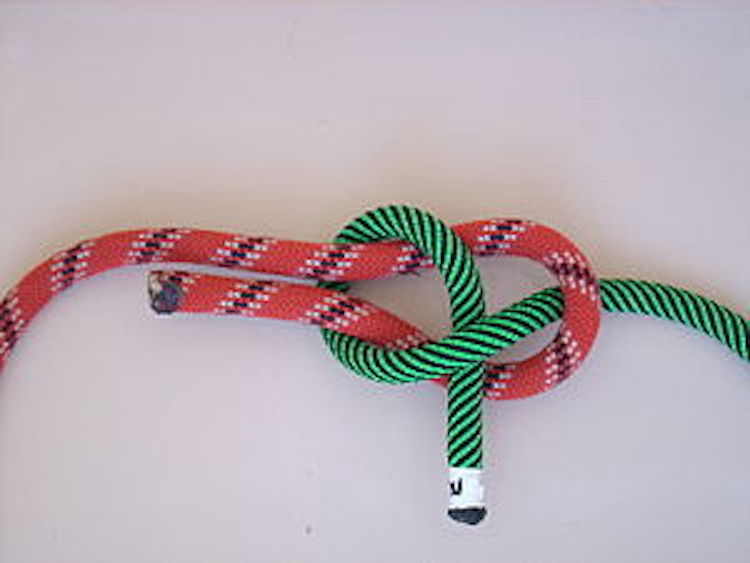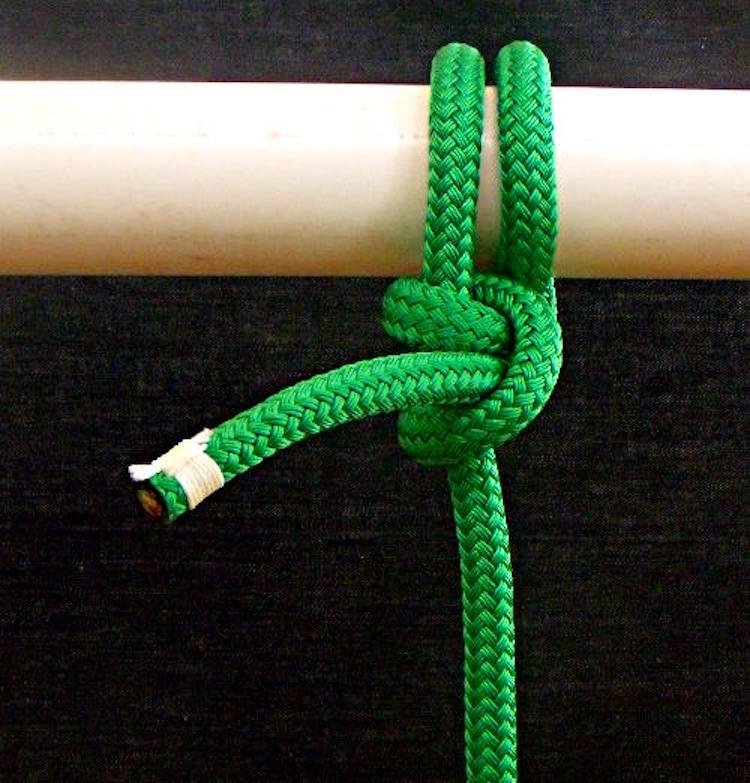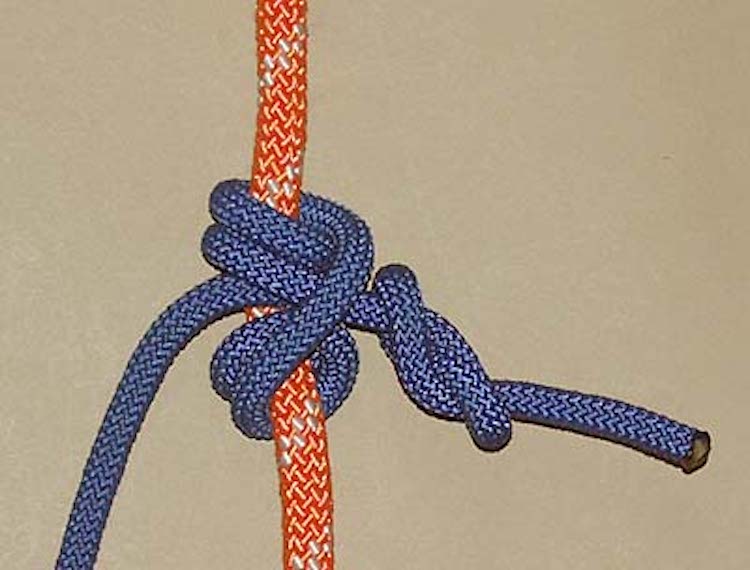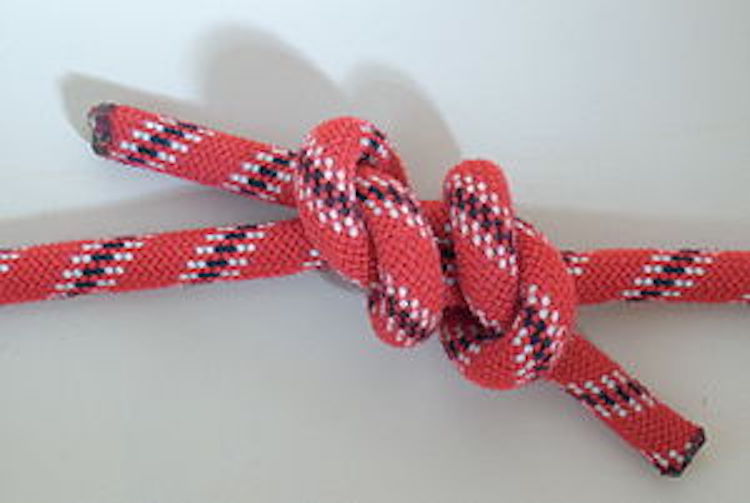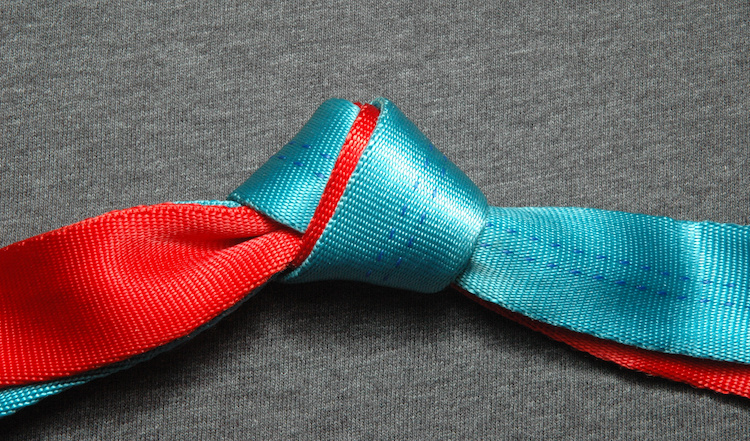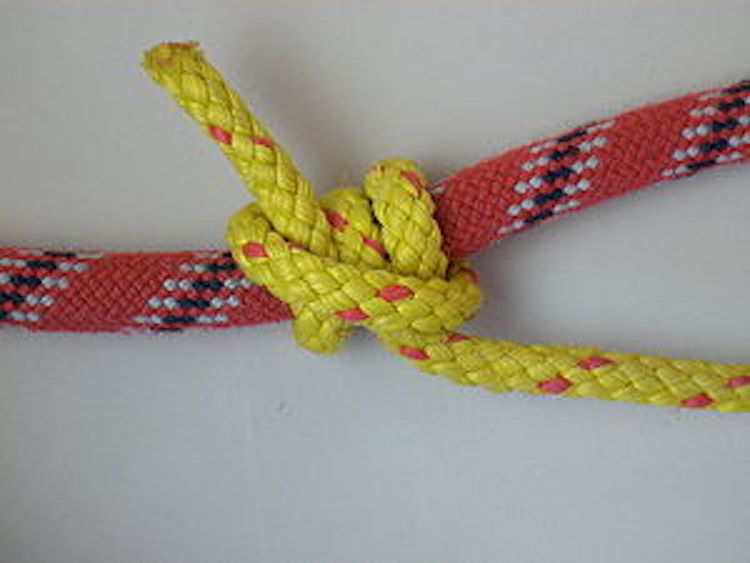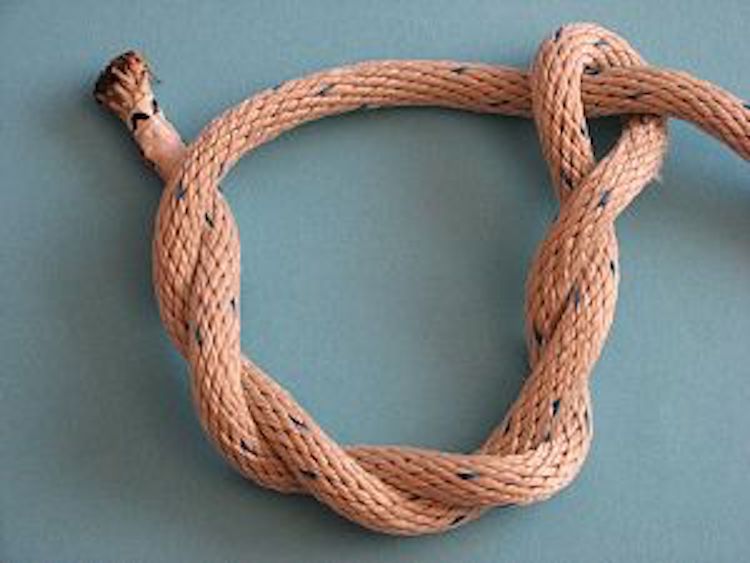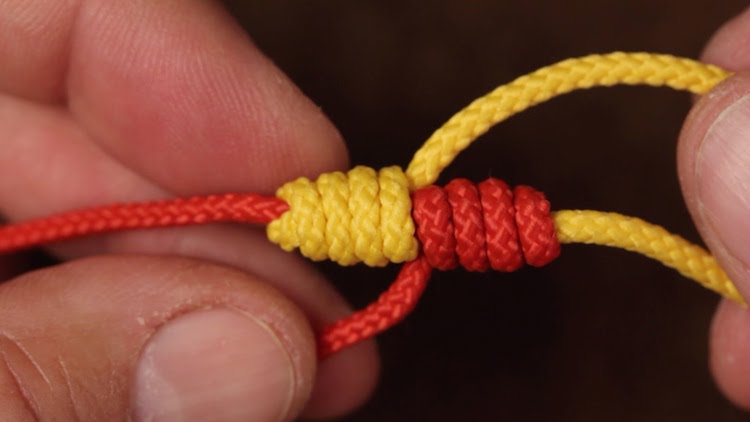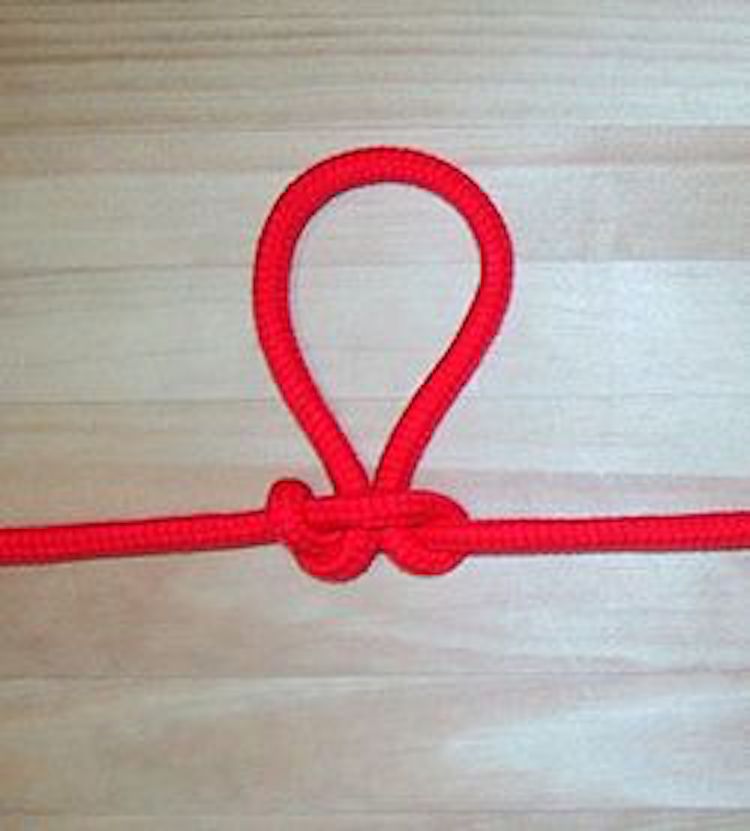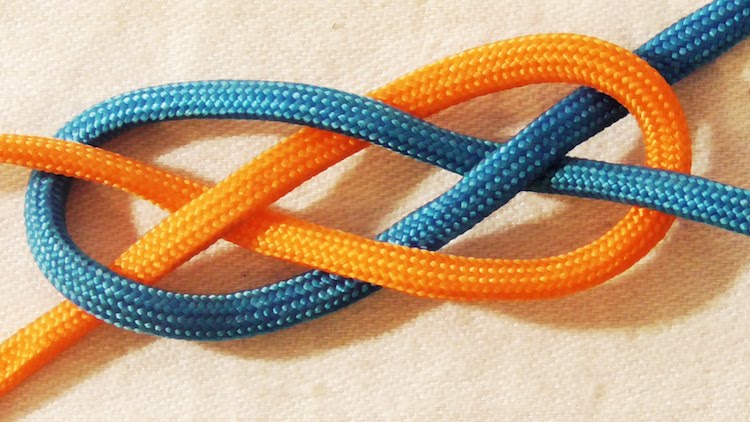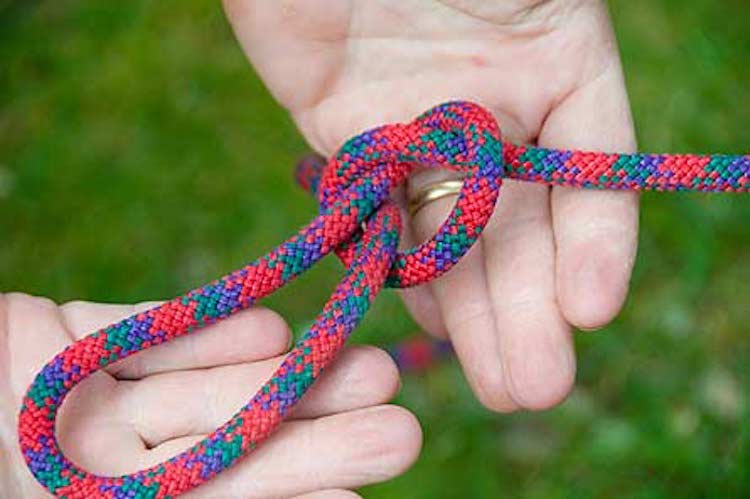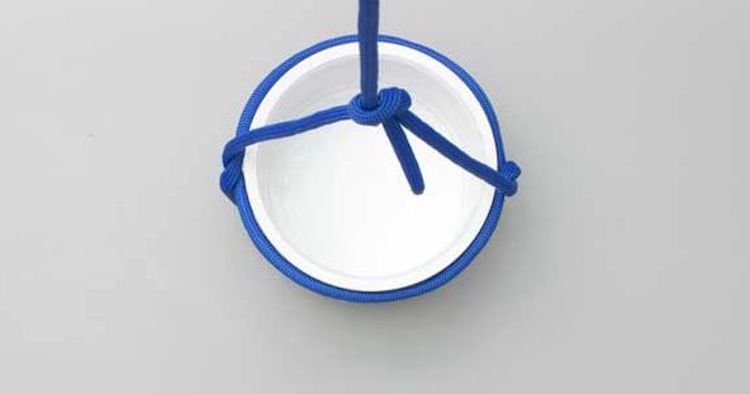Article Courtesy: ideahacks.com | Please click here for original article.
Tying a knot is one of the most important skills that everybody should learn. It does not only help us in many practical ways, but it can also save lives during emergency.
Some types of knots are taught in different types of schools. However, there are really many of them that are important but are almost never heard of.
This video will give you a clue on how it is to tie a knot. This is not difficult to do. Anyone can do it in just a few seconds, and there are many more types of knots that can easily be done even by children.
If you are still unfamiliar with them, here are 17 knots you need to know:
1. Square Knot
Square knot is a conventional way to connect lines. According to AnimatedKnots, the purpose of square knots “to be a binding knot and, tied in the right material against a curved surface.”
This is commonly used in tying shoe laces. You can also use this to tie a bundle of wood so you can carry it easily.
2. Clove Hitch
Clove hitch is a very simple knot and is easy to tie. This is good for binding quickly especially around rough surfaces. However, there is a probability that it slips when tied around the smooth surface.
NetKnots suggests that there should be constant pressure maintained on the line. Clove hitch is convenient, but use it with caution.
3. Bowline
Bowline knot is one the most basic knots you can tie very quickly and easily. The good thing about bowline is that it can be so tight that it doesn’t slip. This is also a good way to make a loop.
Bowline is commonly used to tie two lines together. It can also be used to to attach jib sheets to the jib’s clew. Instructables offers clear steps to tie a bowline knot.
4. Figure 8
Figure 8 knot are used to tie several other knots. Moreover, it can also be used alone in many cases such as rock climbing. Chockstone believes that “If you are a beginner climber and can only remember one knot, let it be this one.” This knot is tough so it is reliable during an emergency situation aside from mountain climbing.
5. Sheet Bend
Sheet bends are not a common knot to use ,but it is very effective in tying different things together, especially tying two ropes together.
According to RealKnots, “If the knot is well seized it does not matter if it is tied right or left handed.” This knot can be used to tie to other lines that are usually difficult to tie together.
6. Two Half Hitches
Two half hitches knots are considered an all-purpose knot because it can be used to tie almost everything. You can use this to tie a line on a tree or a pole.
It can also be used to tie two ropes together. Two half hitches knot is one of the recommended knots of Idaho State University.
7. Taut Line Hitch
Taut line hitch knot is a knot you can use when you want to make a loop that can be adjusted. It means this type of knot can be loosened or tighten.
Taut line hitch is strong because it grips well. You can use it with tent and with anything that needs to be periodically adjusted.
8. Fisherman’s Knot
Fisherman’s knot as the name suggests is used originally for fishing. However, this is not the case in reality as you can use this knot in many ways other than fishing. You can use it to join two lines together.
Sometimes, fisherman’s knot is called angler’s knot or waterman’s knot. In fact, this knot is just an improved version of a clinch knot.
9. Water Knot
Water Knot is commonly used in webbing and in tying together belts and straps. It can also be used in climbing and in making a sling.
However, use it with caution as this type of knot may sometimes cause rupture even when it doesn’t slip. It is best to use materials that are strong and durable.
10. Rolling Hitch
Rolling hitch knot is primarily used for tying a rope to another rope. It is can also be used in the same way to add a rope onto a rod or a pole.
Using this type of knot to join two lines is not for connecting them in one and the same direction. Using this type of knot is like adding a leg to an existing rope.
11. Prusik Knot
The prusik knot works like a taut line hitch in which you can make a loop. You can also loosen or tighten this knot depending on the changes in condition.
What makes it different is that it also works like a rolling hitch that can be used to attach a rope onto another rope in different direction.
12. Timber Hitch
Timber hitch is known to be used specifically to tie a rope to a cylindrical object. This knot is commonly used to haul heavy logs or timber as the name of the knot suggests. Timber hitch is strong, but it can easily be untied even after applying too much pressure.
13. Blood Knot
Blood knot is actually what we can consider a real fisherman’s knot simply because this type of knot is the most favorite knot of many fishermen. The purpose of a using blood knot is to join two broken lines.
When you have a rope that suddenly breaks into two, this type of knot is what you need to use to join them again together.
14. Man Harness
Man harness is a knot used when two or more people are hauling or pulling together heavy loads. The purpose of which is to prevent hands from slipping along the rope while pulling heavy loads.
This why some people use this knot to cheat in a tug-of-war game. Be careful when using it. The knot may slip so don’t put your finger around the loop. Put some load into it as much as possible.
15. Carrick Bend
Carrick bend is like a combination of square knot and blood knot. It works and is tied like a square knot, but Carrick bend is much easier to untie than a square knot. It also works like a blood knot in the sense that you can join together two ropes.
16. Trucker’s Hitch
Trucker’s hitch is a knot used in securing truck loads. This type of knot may work like a chain with which you can wrap a rope around loads and lock it. After carrying heavy loads, trucker’s hitch can also be easily untied.
17. Barrel Hitch
Barrel hitch has been used for many centuries to wrap and tie a rope around a barrel, a bucket, or any cylindrical object in order to lift them in a balance position.
Nowadays, you can use this as a life hack to carry a bucket as though you are carrying a bag.
Unleash The Boy Scout Within You
Knowing how to tie different types of knots has a lot of benefits. You don’t have to be a survivalist to learn them. In fact, most types of knots can be used in our daily life.
The above types of knots are just some of the many types of knots you can learn, but they are one of the most useful knots you can apply in many situations.
Nevertheless, you can choose which one seems to fit your need. You can also experiment on your own so you can discover a type of knot that is similarly reliable and easy to do.

